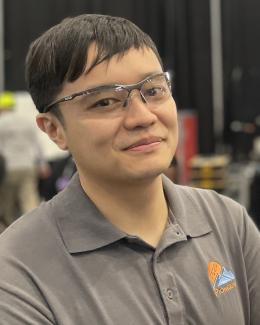Abstract
This work investigated the linear thermal expansion properties of a multi-material specimen fabricated with Invar M93 and A36 steel. A sequence of tests was performed to investigate the viability of additively manufactured Invar M93 for lowering the coefficient of thermal expansion (CTE) in multi-material part tooling. Invar beads were additively manufactured on a steel base plate using a fiber laser system, and samples were taken from the steel, Invar, and the interface between the two materials. The CTE of the samples was measured between 40 °C and 150 °C using a thermomechanical analyzer, and the elemental composition was studied with energy dispersive X-ray spectroscopy. The CTE of samples taken from the steel and the interface remained comparable to that of A36 steel; however, deviations between the thermal expansion values were prevalent due to element diffusion in and around the heat-affected zone. The CTEs measured from the Invar bead were lower than those from the other sections with the largest and smallest thermal expansion values being 10.40 μm/m-K and 2.09 μm/m-K. In each of the sections, the largest CTE was measured from samples taken from the end of the weld beads. An additional test was performed to measure the aggregate expansion of multi-material tools. Invar beads were welded on an A36 steel plate. The invar was machined, and the sample was heated in an oven from 40 °C and 160 °C. Strain gauges were placed on the surface of the part and were used to analyze how the combined thermal expansions of the invar and steel would affect the thermal expansion on the surface of a tool. There were small deviations between the expansion values measured by gauges placed in different orientations, and the elongation of the sample was greatest along the dimension containing a larger percentage of steel. On average, the expansion of the machined Invar surface was 42% less than the expansion of the steel surface. The results of this work demonstrate that additively manufactured Invar can be utilized to decrease the CTE for multi-material part tooling.




